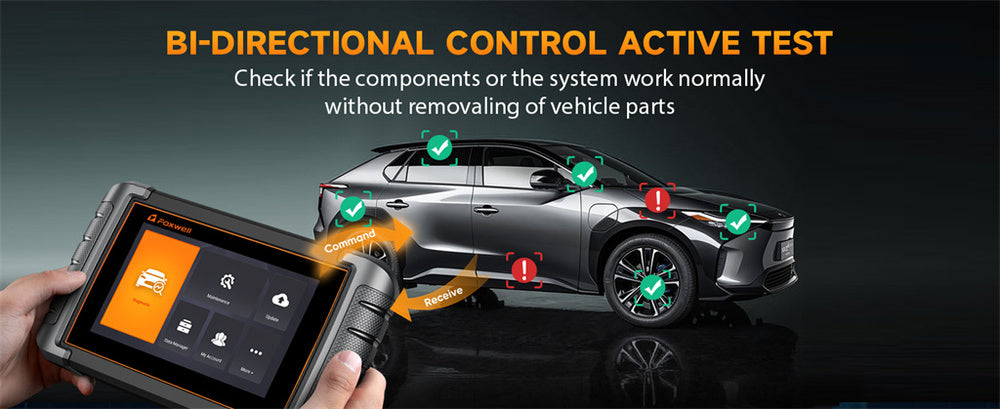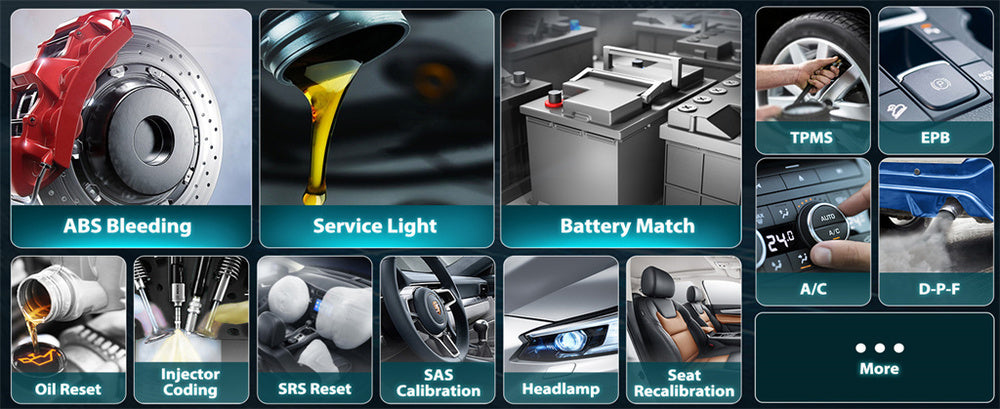Have You Found That the check engine light is flashing, Signaling Something is Wrong with My Car?
Unfortunately, that check engine light could be signaling something amiss, but don't panic: easy methods allow us to decipher Ford codes without using car scanners! Let's dive in now for some actionable steps on decoding those Ford codes yourself without using fancy equipment!
Understanding Your Ford's OBD Systems

First, look under the hood where On-Board Diagnostics (OBD) systems keep tabs on everything: engine performance, transmission issues, and so forth.
OBD1 was used by Ford cars from the early '80s until the mid-1990s as an analog method for car diagnostics, while OBD2 became standard starting in 1996 as its replacement, providing much simpler and uniform diagnostic solutions.
Digging up OBD1 codes in retro style can sometimes prove challenging. To simplify things further, here is how you can locate OBD1 codes quickly: by searching online.
Do you have a Ford from an earlier era with OBD1?
Here's how you can quickly access its codes without breaking a sweat.
Method 1: The Check Engine Light Dance
When your check engine light illuminates, consider it sending you Morse code - here's how you can decipher it:
- Prepare: Park your car, turn off its engine, and check that all devices are off - like setting the stage for a magic trick.
- Find Your Spot: To locate the diagnostic connector hidden under the driver-side Dashboard like an Easter egg.
- Turn Your Key: Put the key into the ignition and turn it to "Run" without starting your engine.
- Watch The Light Show: Your check engine light should start flashing a sequence; for instance, two flashes followed by one flash, and then three flashes mean code 23.
- Decode the Message: Consult your vehicle manual or Google to determine what each flash means; this is like decoding a secret code!
Method 2: Paperclip Hack
If flash methods don't do the trick, grab a paperclip - this method acts like MacGyver in your car!
- Safety First: Switch off the engine and take out your key before doing anything else!
- Locate the Connector: Head back under the dash to search for that connector.
- MacGyver It: Fold that paperclip into a U-shape and insert it into the "Self-Test Input" and "Signal Return" terminals of both connectors—that should do it!
- Turn the Key: Place the ignition key into the "Run" position without starting your engine.
- Decode the Disco: Focus on watching the light and decoding as before - like reading stars, but for car problems!
Crack OBD2 Codes: Welcome to the Future
Have a newer vehicle with OBD2 technology?
Here's how you can communicate with it.
Method 1: The Odometer Carrot Trick
This technique seems too simple; it feels like magic.
- Press and Hold: Press the Trip and Reset buttons of the odometer simultaneously for 30 seconds without pressing the key into position (without starting the engine) before turning the Key "On."
- Magic Numbers: Release the buttons when trouble codes appear on the odometer's display, note them down, and research further as necessary.
- Imagine this: while pressing those buttons and turning on your car key, the odometer suddenly starts flashing codes at you—like someone has compromised it! Someone has gained entry to their vehicle!
Method 2: Jumper Wire Jedi
Fancy yourself as a secret agent? Try this:
- Search the Dashboard Near the Steering Column: It is like finding an entrance to an underground base!
- Wire up: A jump wire connects both pins in the OBD2 Port (OBD2). Turn Key Action "On."
- Counter the Blinks: Watch your check engine light flash out codes, write them down, and decode them online or via your manual.
Imagine this: you're under your Dashboard connecting those pins with wire. As soon as you turn on the key, suddenly, your check engine light begins flashing codes like it's trying to communicate something to you. It's equal parts spy movie and car mechanic—and absolutely fascinating.
Foxwell NT809: Your Diagnostic Sidekick
The Foxwell NT809 makes diagnosing car issues even more straightforward. This helpful gadget acts like having an expert mechanic at your side—reading and clearing codes on virtually all car makes (not just Fords!). Its large display screen makes it simple enough for beginners and enthusiasts alike.
Other Handy Tips Use Apps: Some smartphone applications connect directly with your car's diagnostic system via Bluetooth or Wi-Fi, turning your phone into a scanner. Borrow a Scanner: Many auto parts stores lend out scanners free of charge if these other techniques need to be revised.

Conclusion
Reading Ford codes without a scanner is more than possible; it's rather enjoyable! Without needing an expensive toolkit to understand what your car's trying to tell you, these simple strategies allow you to act like an amateur car detective solving its mysteries of check engine lights - whether using the light flash method on older cars or the jumper wire method with newer ones! You've got this!
For more detailed steps and code definitions, consult your vehicle's service manual or trusted automotive websites. Have fun troubleshooting!
FAQs:
Can I read Ford codes without a scanner?
Yes, you can use the key turn method or an OBD1 jumper wire to read Ford codes without a scanner.
What is the key turn method for reading Ford codes?
The key turn method involves turning the ignition key on and off to display error codes on the dashboard.
Do I need any tools to read Ford codes without a scanner?
For some methods, like the OBD1 jumper wire technique, you might need basic tools like a wire or paperclip.




Leave a comment
This site is protected by hCaptcha and the hCaptcha Privacy Policy and Terms of Service apply.